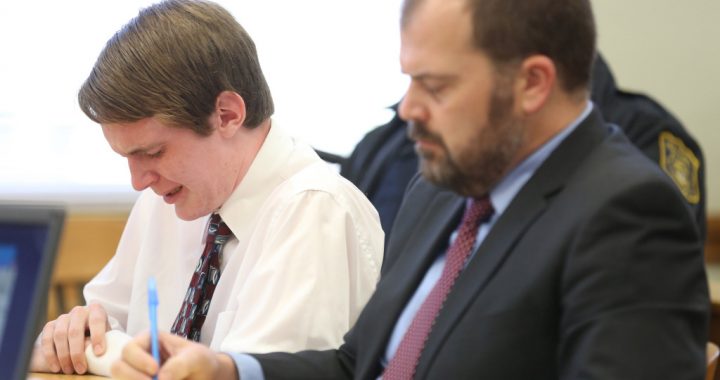WOW!! This certainly makes the connection between the use of these drugs and Bipolar Disorder obvious! But is this suppose to be a big surprise?!
From my new DVD, Bipolar, Shmypolar, Are You Really Bipolar or Misdiagnosed Due to the Use of or Abrupt Discontinuation of an Antidepressant?, let me give you a quick synopsis.
An ANTI-depressant is the opposite of a depressant and is what?
That is correct. It is a stimulant.
What is bipolar? It is a continuous series of mild seizures.
What produces seizures? STIMULANTS, like antidepressants and amphetamines – Ritalin, etc.!
Chemically inducing Bipolar Disorder to create a whole new customer base for the new and high priced atypical antipsychotics is not the least bit difficult when you start patients out on stimulant medications, like Ritalin and antidepressants. That is especially true when given to a young patient with yet growing and developing, and therefore more vulnerable, brain!
Ann Blake-Tracy, Executive Director,
International Coalition for Drug Awareness
www.drugawareness.org & www.ssristories.drugawareness.org
Author: Prozac: Panacea or Pandora? Our
Serotonin Nightmare and audio: Help! I Can’t
Get Off My Antidepressant ()
Sixth sentence reads: “During the year before the new diagnosis of bipolar disorder, youths were commonly diagnosed as having depressive disorder (46.5%) or disruptive behavior disorder (36.7%) and had often filled a prescription for an antidepressant (48.5%), stimulant (33.0%), mood stabilizer (31.8%), or antipsychotic (29.1%].”
http://psychservices.psychiatryonline.org/cgi/content/abstract/60/8/1098
Psychiatr Serv 60:1098-1106, August 2009
doi: 10.1176/appi.ps.60.8.1098
© 2009 American Psychiatric Association
Article
Mental Health Treatment Received by Youths in the Year Before and After a New Diagnosis of Bipolar Disorder
Mark Olfson, M.D., M.P.H., Stephen Crystal, Ph.D., Tobias Gerhard, Ph.D., Cecilia S. Huang, Ph.D. and Gabrielle A. Carlson, M.D.
Dr. Olfson is affiliated with the Department of Psychiatry, Columbia University, New York State Psychiatric Institute, 1051 Riverside Dr., New York, NY 10032 (e-mail: mo49@columbia.edu ). Dr. Crystal and Dr. Huang are with the Institute for Health, Health Care Policy, and Aging Research, and Dr. Gerhard is with the Ernest Mario School of Pharmacy, both at Rutgers University, New Brunswick, New Jersey. Dr. Carlson is with the Department of Psychiatry and Behavioral Medicine, Stony Brook University School of Medicine, Stony Brook, New York.
OBJECTIVE: Despite a marked increase in treatment for bipolar disorder among youths, little is known about their pattern of service use. This article describes mental health service use in the year before and after a new clinical diagnosis of bipolar disorder. METHODS: Claims were reviewed between April 1, 2004, and March 31, 2005, for 1,274,726 privately insured youths (17 years and younger) who were eligible for services at least one year before and after a service claim; 2,907 youths had new diagnosis of bipolar disorder during this period. Diagnoses of other mental disorders and prescriptions filled for psychotropic drugs were assessed in the year before and after the initial diagnosis of bipolar disorder. RESULTS: The one-year rate of a new diagnosis of bipolar disorder was .23%. During the year before the new diagnosis of bipolar disorder, youths were commonly diagnosed as having depressive disorder (46.5%) or disruptive behavior disorder (36.7%) and had often filled a prescription for an antidepressant (48.5%), stimulant (33.0%), mood stabilizer (31.8%), or antipsychotic (29.1%). Most youths with a new diagnosis of bipolar disorder had only one (28.8%) or two to four (28.7%) insurance claims for bipolar disorder in the year starting with the index diagnosis. The proportion starting mood stabilizers after the index diagnosis was highest for youths with five or more insurance claims for bipolar disorder (42.1%), intermediate for those with two to four claims (24.2%), and lowest for those with one claim (13.8%). CONCLUSIONS: Most youths with a new diagnosis of bipolar disorder had recently received treatment for depressive or disruptive behavior disorders, and many had no claims listing a diagnosis of bipolar disorder after the initial diagnosis. The service pattern suggests that a diagnosis of bipolar disorder is often given tentatively to youths treated for mental disorders with overlapping symptom profiles and is subsequently reconsidered.
Related Article:
August 2009: This Month’s Highlights Psychiatr Serv 2009 60: 1009. [Full Text] [PDF]




